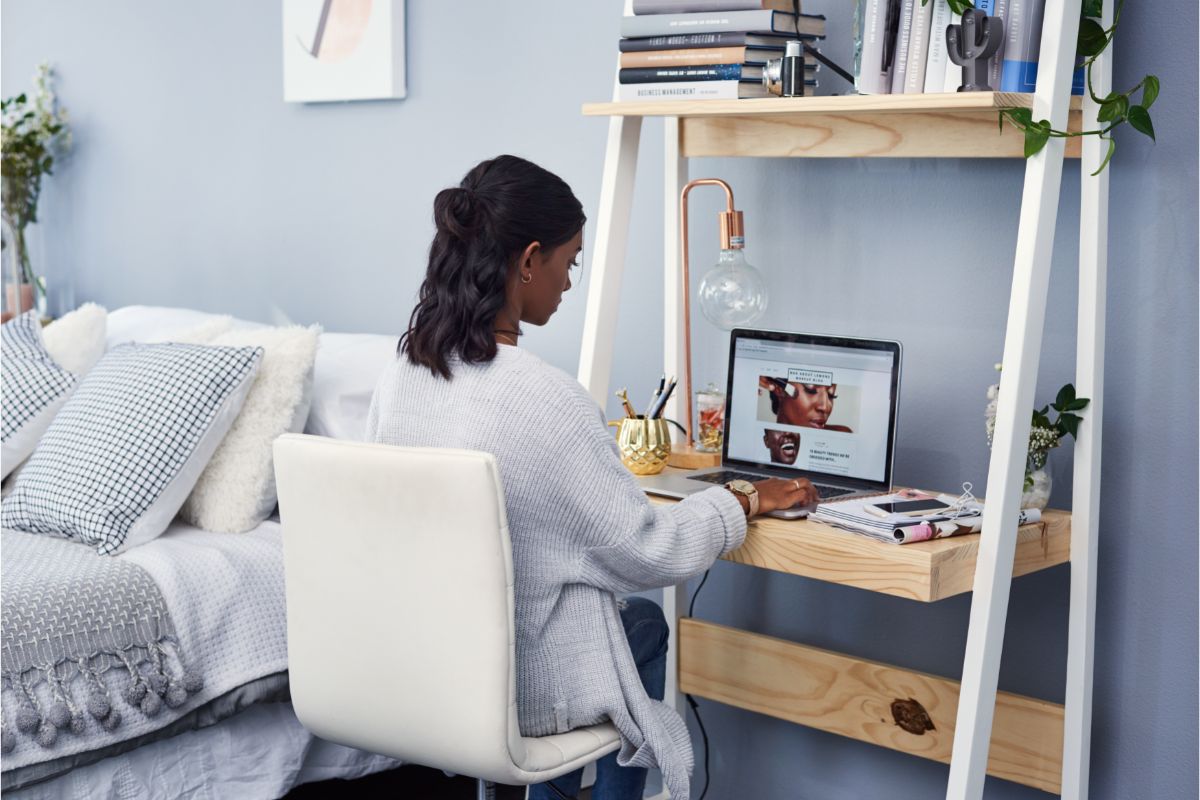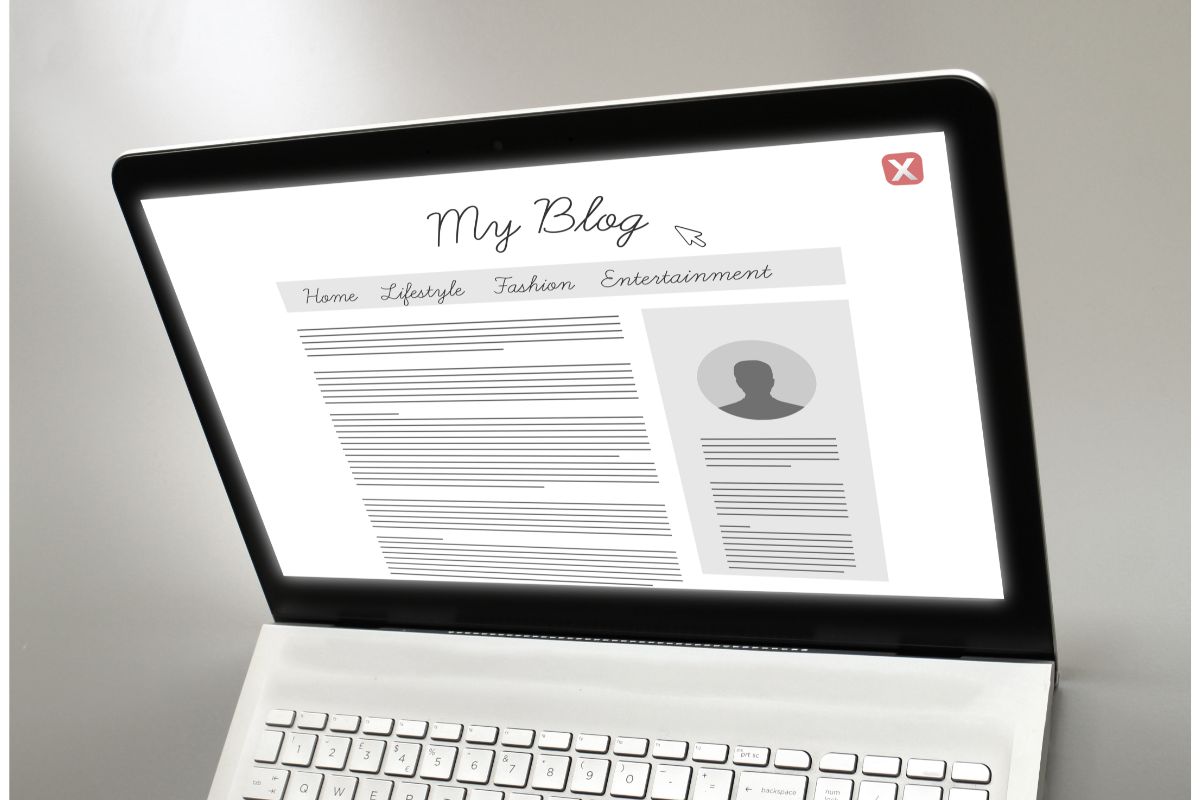If you’re trying to build a successful blog, the first thing you will want to focus on is building the perfect homepage.
On the surface, putting together a good blog homepage might sound simple.

After all, a homepage is supposed to give your readers a clear idea of what your blog is about, and who knows that better than you?
Unfortunately, it’s not as simple as that. A homepage isn’t just a space to introduce your readers to the subject matter of your blog – it’s also the page that will determine how many people actually go on to read your posts.
If you fail to grab your reader’s attention with the homepage, your blog has very little chance of achieving success.
In this guide, we will be explaining what a really good blog homepage should look like and what you should be aiming to do with this page.
By the end of the article, you’ll be ready to create an amazing blog homepage!
Reasons To Avoid The ‘Default Homepage’
The majority of blogs still use what is termed the ‘default homepage’. This is one of the main reasons why so many blogs fail to capture their readers’ attention from the start.
Your average default homepage is derived from a WordPress theme demo. It’s a very basic homepage that displays your menu down one side underneath a search bar.
The rest of the page features a single image and a short introduction to the blog.
While this default homepage is easy to navigate and, to its credit, doesn’t overwhelm the viewer like some more complex homepage designs can, it’s not a good choice for strategic, optimized blogging.
If you want your blog to do well, you need to move away from the default homepage and build something more unique and optimization-driven.
The 20-Second Rule
Another thing you need to bear in mind when creating your blog homepage is something called the 20-second rule.
The 20-second rule essentially means that you only have a maximum of 20 seconds (usually between 10 and 20 seconds) to grab your readers’ attention.
This is based on research by the Nielsen Norman Group which looked at statistics of how long the average viewer spends looking at a website’s homepage before clicking back.
With that being said, the Nielsen Norman Group has also stated that if your blog’s homepage is engaging and has a good value proposition, readers are more likely to stick around and navigate your blog rather than returning to Google.
So, bearing all of this in mind, what do you actually need to do to create a good blog homepage? Let’s find out.
What To Include On Your Blog Homepage

Value Statement
The main thing your blog’s homepage needs to encourage readers to keep reading is a value statement.
A value statement is a statement that outlines the purpose and value of your content. The statement should also explain your priorities when it comes to your blog’s content and what you’re committed to.
So, for example, if you write blog posts about makeup and are committed to promoting products that are both cruelty-free and inclusive, this is definitely something you should mention in your value statement.
This will ensure that readers can identify whether your content aligns with their values, and if it does, they’ll be encouraged to read more.
Call To Action
Ideally, your blog homepage should also feature a call to action.
Often, calls to action are associated with marketing campaigns, but simple phrases that encourage readers to act on information can also drive more traffic to your blog.
An example of a call to action you could use on your blog homepage would be ‘join our email list today to stay up to date on recent developments’.
This will encourage readers who appreciate your value statement to sign up via email, meaning that they will then receive notifications about your content.
Readers are much more likely to continue revisiting blogs if they’re reminded that fresh content is being produced.
You As A Person
How many times have you come across blogs that seem generic without any real sense of personality behind them?
There are a lot of blogs like this out there, and they’re generally much less successful than blogs that are made to feel relatable and human.
On your blog’s homepage, you should include some information about you as a person.
If you have qualifications or other life experience related to the content of your blog, mention this as well since it shows that you know what you’re talking about when it comes to the subject of your content.
You don’t have to include a picture of yourself if you don’t want to (many people prefer to maintain some boundaries when it comes to identifying information), but doing so can help to make your blog feel more personal.
If you don’t want to include a photograph, mention some facts about yourself (such as your interests or a little bit about your life) to make your readers feel as though they know you.
Content Showcase

Try to include links to your best content on your homepage. When you’re considering buying a book, you normally scan the first page to make sure you’re going to enjoy it.
It’s the same with blog posts. If you can give your readers a taste of the content you’re most proud of, they’ll be more likely to come back for more.
Recent Posts
In addition to your very best content, it’s a good idea to provide links to your most recent posts.
You don’t strictly have to do this since it’s more important to showcase the content you’re happiest with, but including your recent posts on your homepage will show your readers that you create new content regularly.
Realizing that a blogger (or any content creator) hasn’t posted in months or even years is one of the main reasons content consumers lose interest, so make sure they don’t get this impression from your homepage!
Testimonials
This is optional because it’s often harder to get testimonials for a blog than for an ecommerce website.
However, if your blog features affiliate links, you might want to try and include testimonials from readers who have found products they’ve loved through your blog.
Alternatively, if your blog is mostly informational, include a list of other sites or social media platforms that have featured your work.
This has the same effect as a collection of testimonials because it shows that your content is valuable enough to have been featured elsewhere.
Final Thoughts
Creating a good blog homepage takes more work than sticking to the default homepage offered by platforms like WordPress, but it’s also not as complicated as you might think.
To make your blog homepage eye-catching and interesting, you need to be clear about the topics and messaging behind your content, your personal values, and who you are as a person.
This will involve creating a value statement and a call to action. You should also showcase your best content and provide easy access to recent posts.
If possible, try including testimonials from readers explaining why they enjoy your blog and what they have gained from reading it.
- The 20 Best Blogging Courses That Are For Beginners - December 7, 2022
- 20 Best WordPress Plugins For Blogs For Effective Blogging! - December 7, 2022
- 5 Excellent Affiliate Marketing Courses To Learn - December 6, 2022








